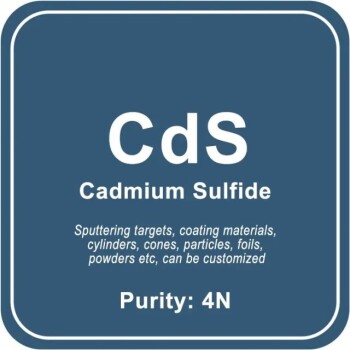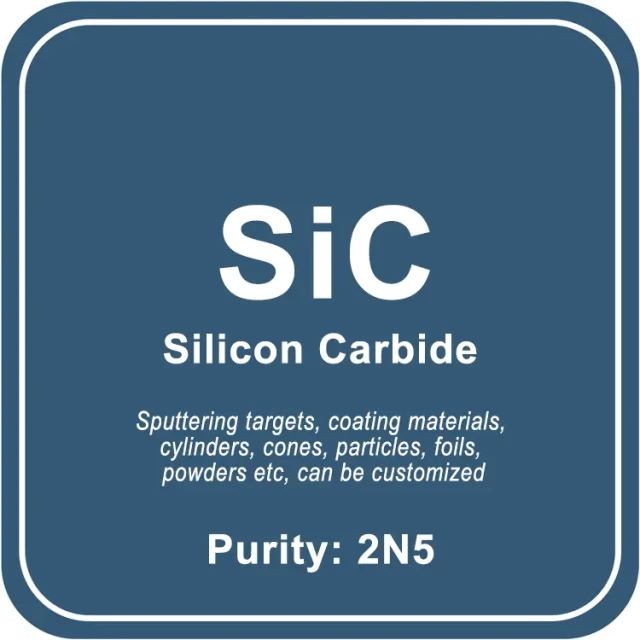
Lab Materials
Silicon Carbide (SiC) Sputtering Target / Powder / Wire / Block / Granule
Item Number : LM-SiC
Price varies based on specs and customizations
- Chemical Formula
- SiC
- Purity
- 2N5
- Shape
- discs / wire / block / powder / plates / column targets / step target / custom-made

Shipping:
Contact us to get shipping details Enjoy On-time Dispatch Guarantee.
We are pleased to offer Silicon Carbide (SiC) materials for laboratory use at competitive prices. Our team of experts specializes in producing and customizing Silicon Carbide (SiC) materials to meet your specific needs, including varying purities, shapes, and sizes.
Our comprehensive selection includes various specifications and sizes of sputtering targets (such as circular, square, tubular, and irregular), coating materials, cylinders, cones, particles, foils, powders, 3D printing powders, nanometer powders, wire rods, ingots, blocks, and more.
Details






About Silicon Carbide (SiC)
Silicon carbide (SiC) is a hard chemical compound consisting of silicon and carbon. It is a semiconductor and occurs naturally as the rare mineral moissanite. However, since 1893, it has been mass-produced as a powder and crystal for use as an abrasive.
SiC is commonly used in applications that require high endurance, such as car brakes, car clutches, and ceramic plates in bulletproof vests. The compound's grains can be bonded together by sintering to form very hard ceramics.
Moreover, large single crystals of silicon carbide can be grown using the Lely method, which can be cut into gems known as synthetic moissanite. SiC is also used in electronic devices that operate at high temperatures or high voltages or both, including light-emitting diodes (LEDs) and detectors in early radios.
Numerous applications of SiC in the manufacturing, automotive, defense, electronics, lighting, and steel industries. SiC is available in different forms, including ultra-high purity, high purity, submicron, and nanopowder.
Ingredient Quality Control
- Raw material composition analysis
- Through the use of equipment such as ICP and GDMS, the content of metal impurities is detected and analyzed to ensure that it meets the purity standard;
Non-metallic impurities are detected by equipment such as carbon and sulfur analyzers, nitrogen and oxygen analyzers. - Metallographic flaw detection analysis
- The target material is inspected using flaw detection equipment to ensure that there are no defects or shrinkage holes inside the product;
Through metallographic testing, the internal grain structure of the target material is analyzed to ensure that the grains are fine and dense. - Appearance and dimension inspection
- Product dimensions are measured using micrometers and precision calipers to ensure compliance with drawings;
The surface finish and cleanliness of the product are measured using a surface cleanliness meter.
Conventional Sputtering Target Sizes
- Preparation process
- hot isostatic pressing, vacuum melting, etc.
- Sputtering target shape
- plane sputtering target, multi-arc sputtering target, step sputtering target, special-shaped sputtering target
- Round sputtering target size
- Diameter: 25.4mm / 50mm / 50.8mm / 60mm / 76.2mm / 80mm / 100mm / 101.6mm / 152.4mm
Thickness: 3mm / 4mm / 5mm / 6mm / 6.35mm
Size can be customized. - Square sputtering target size
- 50×50×3mm / 100×100×4mm / 300×300×5mm, size can be customized
Available Metal Forms
Metal Forms Details
We manufacture almost all the metals listed on the periodic table in a wide range of forms and purities, as well as standard sizes and dimensions. We can also produce custom-made products to meet specific customer requirements, such as size, shape, surface area, composition, and more. The following list provides a sample of the forms we offer, but it is not exhaustive. If you need laboratory consumables, please contact us directly to request a quote.
- Flat/Planar Forms: Board, Film, Foil, Microfoil, Microleaf, Paper, Plate, Ribbon, Sheet, Strip, Tape, Wafer
- Preformed Shapes: Anodes, Balls, Bands, Bars, Boats, Bolts, Briquettes, Cathodes, Circles, Coils, Crucibles, Crystals, Cubes, Cups, Cylinders, Discs, Electrodes, Fibers, Filaments, Flanges, Grids, Lenses, Mandrels, Nuts, Parts, Prisms, Pucks, Rings, Rods, Shapes, Shields, Sleeves, Springs, Squares, Sputtering Targets, Sticks, Tubes, Washers, Windows, Wires
- Microsizes: Beads, Bits, Capsules, Chips, Coins, Dust, Flakes, Grains, Granules, Micropowder, Needles, Particles, Pebbles, Pellets, Pins, Pills, Powder, Shavings, Shot, Slugs, Spheres, Tablets
- Macrosizes: Billets, Chunks, Cuttings, Fragments, Ingots, Lumps, Nuggets, Pieces, Punchings, Rocks, Scraps, Segments, Turnings
- Porous and Semi-Porous: Fabric, Foam, Gauze, Honeycomb, Mesh, Sponge, Wool
- Nanoscale: Nanoparticles, Nanopowders, Nanofoils, Nanotubes, Nanorods, Nanoprisms
- Others: Concentrate, Ink, Paste, Precipitate, Residue, Samples, Specimens
KinTek specializes in the manufacturing of high-purity and ultra-high-purity materials with a purity range of 99.999% (5N), 99.9999% (6N), 99.99995% (6N5), and in some cases, up to 99.99999% (7N). Our materials are available in specific grades, including UP/UHP, semiconductor, electronic, deposition, fiber optic, and MBE grades. Our high-purity metals, oxides, and compounds are specifically crafted to meet the rigorous demands of high-technology applications and are ideal for use as dopants and precursor materials for thin film deposition, crystal growth of semiconductors, and synthesis of nanomaterials. These materials find use in advanced microelectronics, solar cells, fuel cells, optical materials, and other cutting-edge applications.
Packaging
We use vacuum packaging for our high-purity materials, and each material has specific packaging tailored to its unique characteristics. For instance, our Hf sputter target is externally tagged and labeled to facilitate efficient identification and quality control. We take great care to prevent any damage that could occur during storage or transportation.
FAQ
What Are Engineering Ceramics?
What Are High Purity Materials?
What Is RF PECVD?
What Are The Main Types Of Engineering Ceramics?
How Does RF PECVD Work?
What Are The Applications Of Engineering Ceramics?
What Are The Advantages Of RF PECVD?
How Do Engineering Ceramics Differ From Traditional Ceramics?
What Are The Advantages Of Using Alumina Ceramics?
Why Are Zirconia Ceramics Preferred In Certain Applications?
What Makes Silicon Carbide Ceramics Suitable For High-temperature Applications?
How Are Boron Nitride Ceramics Used In Electronics?
What Is The Manufacturing Process Of Engineering Ceramics?
Can Engineering Ceramics Be Customized For Specific Applications?
4.8
out of
5
KINTEK SOLUTION's silicon carbide products are top-notch. They arrived promptly and in perfect condition, and their quality is exceptional. Highly recommended!
4.7
out of
5
I've been using KINTEK SOLUTION's silicon carbide for years, and I'm always impressed with their quality and consistency. They're a reliable supplier, and I highly recommend them.
4.9
out of
5
KINTEK SOLUTION's silicon carbide products are a game-changer for my research. They're incredibly durable and have enabled me to achieve breakthrough results. Thank you!
4.6
out of
5
KINTEK SOLUTION's silicon carbide products are worth every penny. They're made with high-quality materials and craftsmanship and have exceeded my expectations.
4.8
out of
5
I'm thoroughly impressed with KINTEK SOLUTION's silicon carbide products. They're a perfect fit for my application, and their customer service is outstanding.
4.9
out of
5
KINTEK SOLUTION's silicon carbide products are a revelation. They've helped me optimize my experiments and achieve remarkable results. Highly recommended!
4.7
out of
5
I've been using KINTEK SOLUTION's silicon carbide for my research for years, and I've never been disappointed. Their products are consistently high quality and reliable.
4.8
out of
5
KINTEK SOLUTION's silicon carbide products are a lifesaver. They've helped me troubleshoot and resolve issues in my experiments that I couldn't solve before. Thank you!
4.9
out of
5
I'm blown away by the performance of KINTEK SOLUTION's silicon carbide products. They're pushing the boundaries of what's possible in my field. Amazing!
4.7
out of
5
KINTEK SOLUTION's silicon carbide products are a must-have for any serious researcher. They're incredibly versatile and can be used in a wide range of applications.
4.8
out of
5
I'm a huge fan of KINTEK SOLUTION's silicon carbide products. They're incredibly durable and have helped me achieve groundbreaking results in my research.
4.9
out of
5
KINTEK SOLUTION's silicon carbide products are simply the best. They're made with the highest quality materials and craftsmanship, and they deliver exceptional performance.
4.7
out of
5
I've been using KINTEK SOLUTION's silicon carbide for years, and I've never had a single complaint. Their products are consistently high quality and reliable.
4.8
out of
5
KINTEK SOLUTION's silicon carbide products are a game-changer for my research. They've enabled me to achieve results that I never thought possible. Thank you!
4.9
out of
5
I'm thoroughly impressed with KINTEK SOLUTION's silicon carbide products. They're a perfect fit for my application, and their customer service is outstanding.
REQUEST A QUOTE
Our professional team will reply to you within one business day. Please feel free to contact us!
Related Products
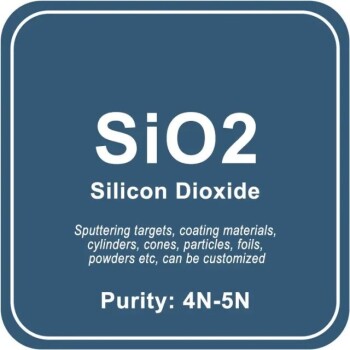
High Purity Silicon Dioxide (SiO2) Sputtering Target / Powder / Wire / Block / Granule
Looking for Silicon Dioxide materials for your lab? Our expertly tailored SiO2 materials come in various purities, shapes, and sizes. Browse our wide range of specifications today!
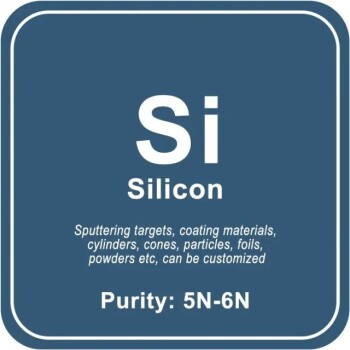
High Purity Silicon (Si) Sputtering Target / Powder / Wire / Block / Granule
Looking for high-quality Silicon (Si) materials for your laboratory? Look no further! Our custom-produced Silicon (Si) materials come in various purities, shapes, and sizes to suit your unique requirements. Browse our selection of sputtering targets, powders, foils, and more. Order now!
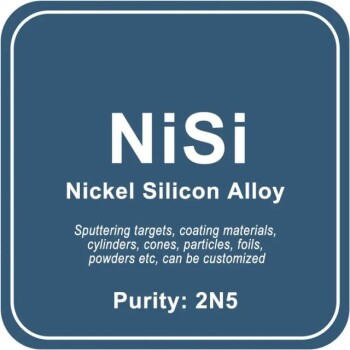
Nickel Silicon Alloy (NiSi) Sputtering Target / Powder / Wire / Block / Granule
Looking for Nickel Silicon Alloy materials for your lab? Our expertly produced and tailored materials come in various shapes and sizes to suit your unique needs. Get sputtering targets, coating materials, powders, and more at reasonable prices.
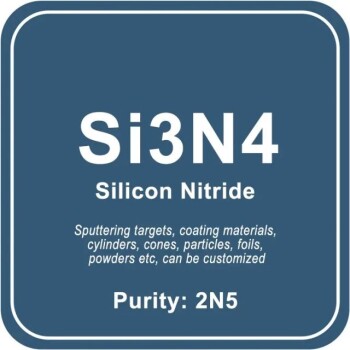
Silicon Nitride (Si3N4) Sputtering Target / Powder / Wire / Block / Granule
Get affordable Silicon Nitride (Si3N4) materials for your lab needs. We produce and customize various shapes, sizes, and purities to fit your requirements. Browse our range of sputtering targets, powders, and more.
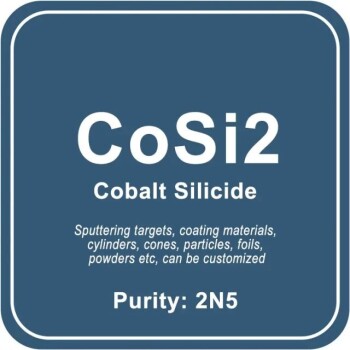
Cobalt Silicide (CoSi2) Sputtering Target / Powder / Wire / Block / Granule
Looking for affordable Cobalt Silicide materials for your laboratory research? We offer tailored solutions of different purities, shapes, and sizes, including sputtering targets, coating materials, and more. Explore our range now!
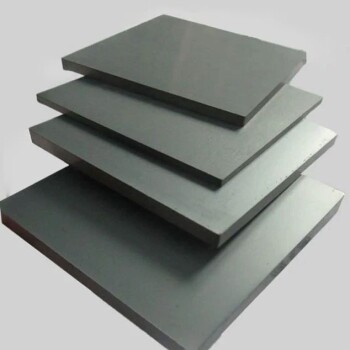
Silicon Carbide (SIC) Ceramic Plate
Silicon nitride (sic) ceramic is an inorganic material ceramic that does not shrink during sintering. It is a high-strength, low-density, high-temperature-resistant covalent bond compound.

Silicon Carbide (SIC) Ceramic Sheet Wear-Rresistant
Silicon carbide (sic) ceramic sheet is composed of high-purity silicon carbide and ultra-fine powder, which is formed by vibration molding and high-temperature sintering.
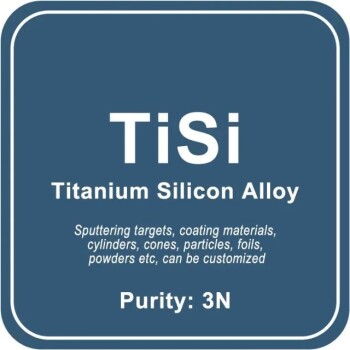
Titanium Silicon Alloy (TiSi) Sputtering Target / Powder / Wire / Block / Granule
Discover our affordable Titanium Silicon Alloy (TiSi) materials for laboratory use. Our custom production offers various purities, shapes, and sizes for sputtering targets, coatings, powders, and more. Find the perfect match for your unique needs.
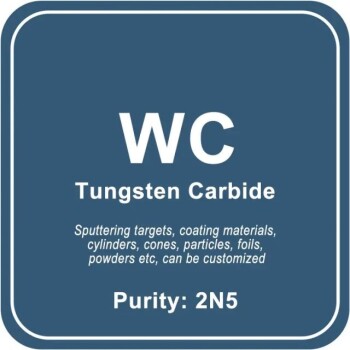
Tungsten Carbide (WC) Sputtering Target / Powder / Wire / Block / Granule
Looking for affordable Tungsten Carbide (WC) materials for your lab? Our expertly tailored products come in various shapes and sizes, from sputtering targets to nanometer powders. Shop now for quality materials that fit your unique needs.

Silicon Nitride (SiN) Ceramic Sheet Precision Machining Ceramic
Silicon nitride plate is a commonly used ceramic material in the metallurgical industry due to its uniform performance at high temperatures.
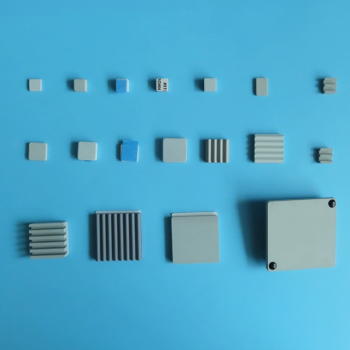
Silicon Carbide (SIC) Ceramic Sheet Flat / Corrugated Heat Sink
Silicon carbide (sic) ceramic heat sink not only does not generate electromagnetic waves, but also can isolate electromagnetic waves and absorb part of electromagnetic waves.
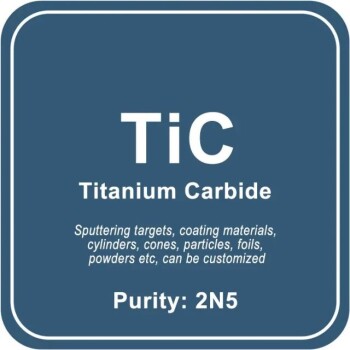
Titanium Carbide (TiC) Sputtering Target / Powder / Wire / Block / Granule
Get high-quality Titanium Carbide (TiC) materials for your lab at affordable prices. We offer a wide range of shapes and sizes, including sputtering targets, powders, and more. Tailored to your specific needs.
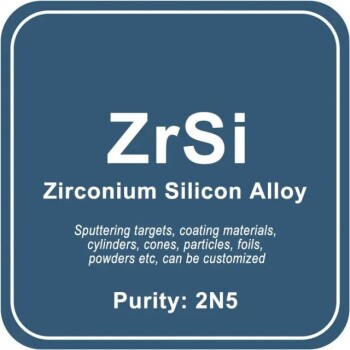
Zirconium Silicon Alloy (ZrSi) Sputtering Target / Powder / Wire / Block / Granule
Discover our Zirconium Silicon Alloy (ZrSi) materials for laboratory use at affordable prices. We produce tailored materials to fit your unique requirements, offering a wide range of specifications and sizes for sputtering targets, coating materials, powders, and more.

CVD Diamond Coating: Superior Thermal Conductivity, Crystal Quality, and Adhesion for Cutting Tools, Friction, and Acoustic Applications

Infrared Silicon / High Resistance Silicon / Single Crystal Silicon Lens
Silicon (Si) is widely regarded as one of the most durable mineral and optical materials for applications in the near-infrared (NIR) range, approximately 1 μm to 6 μm.
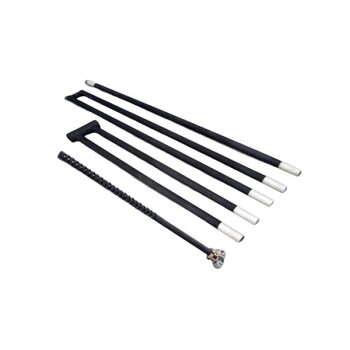
silicon carbide(SiC) heating element
Experience the advantages of Silicon Carbide (SiC) Heating Element: Long service life, high corrosion and oxidation resistance, fast heating speed, and easy maintenance. Learn more now!

Alumina Zirconia Special-Shaped Parts Processing Custom-Made Ceramic Plates
Alumina ceramics have good electrical conductivity, mechanical strength and high temperature resistance, while zirconia ceramics are known for their high strength and high toughness and are widely used.
Related Articles

Precautions for installing silicon carbide stick
Precautions for installing silicon carbide stic.

The Scientific Principle of Sieving: Understanding Particle Size Distribution and Laboratory Test Sieves
Learn about the scientific principle of sieving, including the process of separating particles based on size, types of laboratory test sieves. Discover how sieving impacts various industries and the accuracy of particle sizing measurements.

Spark Plasma Sintering Furnace: The Ultimate Guide to SPS Furnaces
Discover the world of Spark Plasma Sintering Furnaces (SPS). This comprehensive guide covers everything from its advantages and applications to its process and equipment. Learn how SPS furnaces can revolutionize your sintering operations.

The Role of Plasma in PECVD Coatings
PECVD (Plasma Enhanced Chemical Vapor Deposition) is a type of thin film deposition process that is widely used for creating coatings on various substrates. In this process, a plasma is used to deposit thin films of various materials onto a substrate.

Cold Isostatic Pressing: An Overview and its Industrial Applications
Cold isostatic pressing (CIP) is a method of processing materials by using liquid pressure to compact powder. It is similar to metal mold processing and is based on Pascal's law.

The Role of Powder Characteristics in Cold Isostatic Pressing
Cold Isostatic Pressing (CIP) is a powder compaction technique that involves applying uniform pressure to a powder-filled container from all directions.

Technical Overview of Silicon-Carbon Anode Materials Prepared by CVD Method
This article discusses the key technical aspects of silicon-carbon anode materials prepared via CVD, focusing on their synthesis, performance improvements, and industrial application potential.

Carbon Coating for Surface Modification of Silicon-Based Materials in Lithium-Ion Batteries
This article discusses the application of carbon coatings to improve the performance of silicon-based anode materials in lithium-ion batteries.

PECVD Technology: Principles, Materials, Advantages, and Applications
An in-depth analysis of PECVD technology, its principles, materials, process parameters, advantages, and applications across various industries.

Common Abnormal Causes and Solutions for PECVD Coating in Crystalline Silicon Solar Cells
Analyzes common PECVD coating issues in solar cells and provides solutions to improve quality and reduce costs.

Preparation of Graphene by Chemical Vapor Deposition (CVD)
This article discusses the various methods of graphene preparation, focusing on the Chemical Vapor Deposition (CVD) technique and its advancements.

Application of Isostatic Graphite in the Photovoltaic Industry
An overview of the use of isostatic graphite in various stages of photovoltaic production and its market demand.
